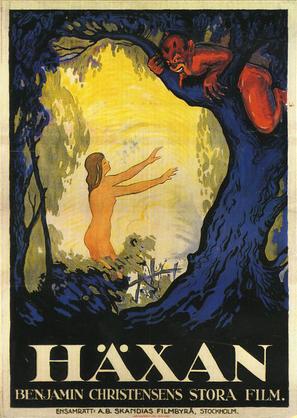 This Saturday night July 31st at the Old Rock House, the Rats & People Motion Picture Orchestra present their original score to Chapter 2 of Benjamin Christensen's Häxan (1922). Saturday night's presentation represents the first of a series of "sneak previews" of the R&P MPO's full score of the film that will culminate in a full presentation of Häxan in late fall of this year. This Saturday night's show opens with Black James (aka Jennifer McDaniel), whose set will cast a macabre and supernatural mood by way of angular, often menacingly amplified banjo and high-lonesome lyric. Theodore headlines the evening, back in town from sowing spectral seeds of heartache and despair upon this persistently fertile soil of the American Midwest.
This Saturday night July 31st at the Old Rock House, the Rats & People Motion Picture Orchestra present their original score to Chapter 2 of Benjamin Christensen's Häxan (1922). Saturday night's presentation represents the first of a series of "sneak previews" of the R&P MPO's full score of the film that will culminate in a full presentation of Häxan in late fall of this year. This Saturday night's show opens with Black James (aka Jennifer McDaniel), whose set will cast a macabre and supernatural mood by way of angular, often menacingly amplified banjo and high-lonesome lyric. Theodore headlines the evening, back in town from sowing spectral seeds of heartache and despair upon this persistently fertile soil of the American Midwest.Given the tone and tenor of the evening, Häxan's Chapter 2 presents itself as the ideal fit. The setting is the European village of 1488 where, as an opening title card explains, the pervasiveness of folk beliefs and superstition as to the existence of witchcraft make its existence "true." By virtue of this title card explanation, Häxan's ostensibly scientifically rational documentary posture has license to present a wholly incorporated Medieval worldview: Chapter 2 oscillates between a realist depiction of the miserable material condition of common medieval society and a near-equally "real" depiction of a supernatural reality overlying these material conditions.
Amid the squalor and sickness of the medieval village are witches, sorcerors and demons. They offer promises of carnal pleasure and fantastic experiences transcendent of the sexual discipline of the Church and the oppressive misery of the village. The transcendence offered is fantastic, but at the price of bringing only further disease and famine upon the village. Moreover, the transcendence of the tempted individual later proves itself to be a trap. The soul is irreparably debauched and therefore damned. The stakes in this world, then, are high - both for the already-precarious health and safety of the village and for the individual immortal soul. As the old song goes, "The Devil is Real."
The R&P MPO's original score for Häxan picks up in several aspects from where the ensemble left The Last Laugh, Nosferatu and Strike. At varying times and degree, Häxan's visual narrative is a psychological drama of escapist dream and delusion, a documentary of an earlier era both eerie and grotesque, a fever-dream spectacle of the diabolical and profane, and a consciously provocative commentary on the social transaction of violence and torture. The R&P MPO's score for Häxan weaves similar musical threads in service of Haxan's visual threads. Echoes of The Last Laugh's sense of alienation and escapist dream, Nosferatu's eerie and atmospheric foreboding, and Strike's provocative muscularity each have in turn imprinted themselves upon Häxan. Unlike these previous scores, however, Häxan's substance and affect is near-totally "classical/modern." Häxan's score evokes more of the Romantics, Bartók and Glass and less of folk traditions or 20th Century "popular" music. The idea, more than ever, is to "play it straight" in complementary service and support of Haxan's visuals. The idea is to think, feel and travel in a world where the Devil is real - to trip the Medieval epistemic.
Theodore w/ The Rats & People Motion Picture Orchestra and Black James
Saturday, July 31st
Doors at 8, Show at 9. 21+, $7
The Old Rock House
1200 S. 7th St., STL MO 63104




2 comments:
Replica Louis Vuitton Shirts
replica louis vuitton
Replica Louis Vuitton Accessories
Visite nosso blog: filhosdafe.blogspot.com.br
Post a Comment